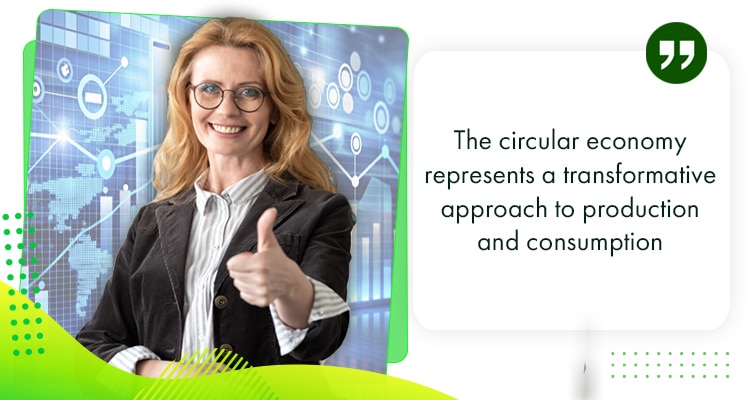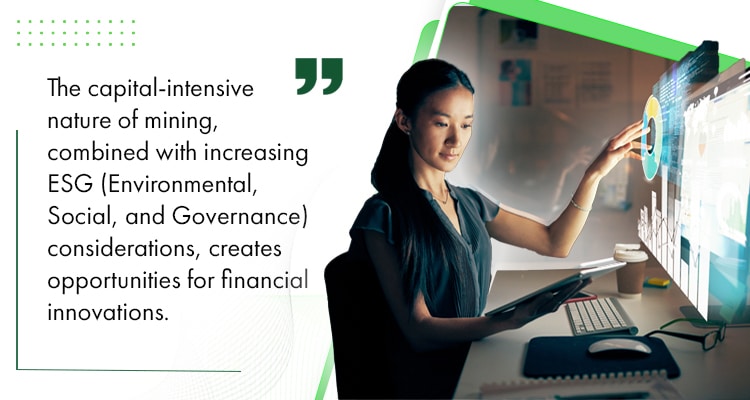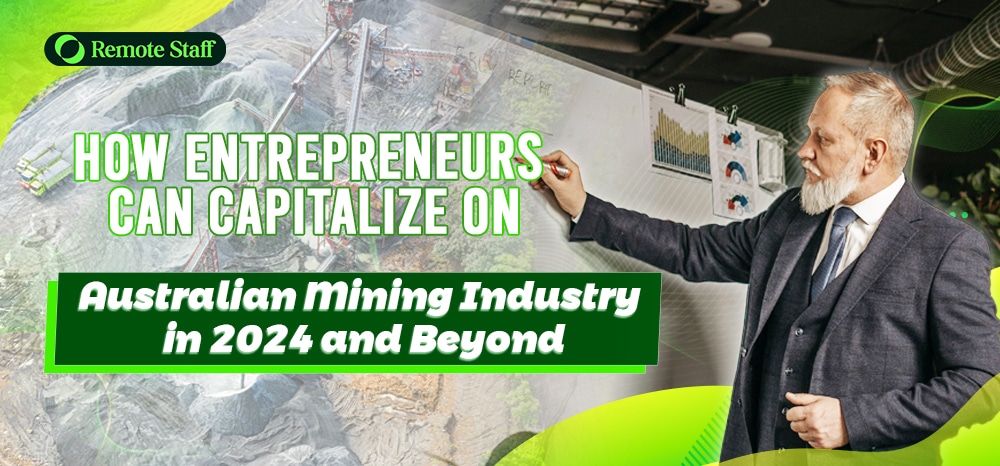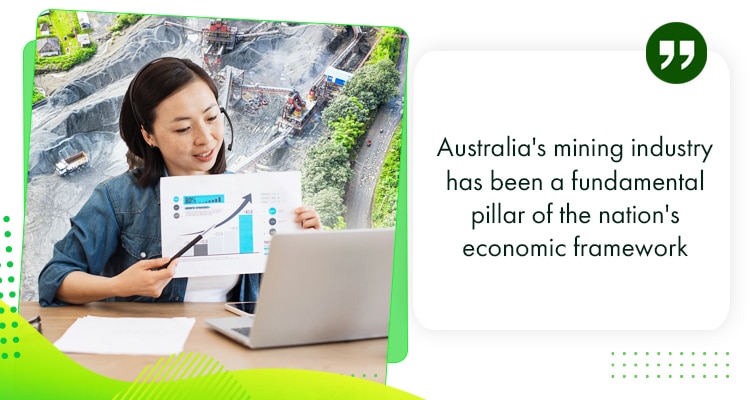Opportunities in Australia’s Mining Sector
Australia’s mining industry has been a fundamental pillar of the nation’s economic framework, playing a crucial role in generating substantial export revenue and bolstering the GDP.
As we advance into 2024 and beyond, the industry stands at a crossroads, presenting a unique blend of challenges and opportunities.
These dynamics offer a fertile ground for innovative entrepreneurs who are keen to harness the potential within this sector.
With global shifts towards sustainable practices, technological advancements, and fluctuating commodity prices, the mining industry is undergoing significant transformations.
Entrepreneurs who are adept at recognizing and adapting to these changes can carve out successful ventures by aligning their strategies with emerging trends.
This article delves into the ways in which forward-thinking entrepreneurs can tap into the Australian mining industry’s potential, drawing insights from recent developments and future projections to inform strategic decision-making.
Understanding the Current Landscape
Before delving into entrepreneurial opportunities, it’s crucial to understand the current state of the Australian mining industry. As highlighted in ABB’s recent analysis, several key trends are shaping the sector in 2024:
- Increased focus on safety regulations
- Growing scrutiny on sustainability and emissions
- Acceleration of mine electrification
- Persistent skills shortages and changing workforce needs
- Capital constraints and rising operational costs
These trends present both challenges and opportunities for entrepreneurs looking to enter or expand within the mining sector.
Safety Innovation: A Prime Opportunity
The Australian mining industry is renowned for its safety standards, but recent regulatory changes, particularly in Western Australia, have put even greater emphasis on safety measures. This focus creates a significant opportunity for entrepreneurs to develop innovative safety solutions.
Some opportunities include:
Ventilation Systems: One area ripe for innovation is mine ventilation. New regulations require ventilation systems capable of ensuring adequate air quality even when a mine’s entire haul fleet is underground simultaneously. Entrepreneurs can develop smart ventilation solutions that not only meet these stringent requirements but also improve energy efficiency.
Automated Safety Systems: There’s growing demand for automated safety systems that can monitor and respond to potential hazards in real-time. Entrepreneurs with expertise in sensors, IoT, and AI can create integrated safety platforms that enhance worker protection while optimizing operational efficiency.
Safety Training Solutions: With the industry’s increasing complexity, there’s a need for advanced safety training solutions. Virtual and augmented reality technologies offer exciting possibilities for creating immersive, effective training programs that prepare workers for various scenarios without exposing them to actual risks.
Sustainability and Emissions Reduction
The Australian mining industry is under increasing pressure to reduce its environmental footprint, particularly its carbon emissions, due to several factors. The industry is a significant contributor to greenhouse gas emissions, accounting for 9.5% of Australia’s total emissions in 2019. This environmental impact has led to heightened scrutiny from investors, customers, and regulators, who are demanding more sustainable practices and a clear path towards net-zero emissions.
The global transition towards a low-emissions economy further intensifies this pressure, as there is a rising demand for critical minerals essential for clean energy technologies, such as wind and solar power, electric vehicles, and batteries. This shift presents opportunities for entrepreneurs to develop and implement sustainable solutions within the mining sector. By adopting innovative technologies and practices, such as automation, renewable energy integration, and advanced data analytics, the industry can significantly reduce its carbon footprint while maintaining productivity and competitiveness.
Moreover, the Australian minerals industry has embraced frameworks like Towards Sustainable Mining (TSM) to enhance its environmental and social governance (ESG) credentials, reinforcing its commitment to sustainability. These efforts create a fertile ground for entrepreneurs to introduce new technologies and business models that align with the industry’s sustainability goals, thereby capitalizing on the growing demand for environmentally responsible mining practices.
Some opportunities:
Renewable Energy Integration: Mining operations require significant energy. Entrepreneurs can capitalize on this by developing tailored renewable energy solutions for mining sites, including solar, wind, and energy storage systems designed to withstand harsh mining environments.
Carbon Capture and Utilization: As mines seek to reduce their Scope 1 and 2 emissions, there’s growing interest in carbon capture technologies. Entrepreneurs can explore innovative ways to capture and utilize carbon emissions from mining operations, potentially creating valuable by-products in the process.
Sustainable Water Management: Water scarcity is a critical issue in many mining regions. Entrepreneurs can develop advanced water treatment and recycling systems that minimize water usage and environmental impact while ensuring compliance with increasingly strict regulations.
 Electrification and Energy Efficiency
Electrification and Energy Efficiency
The push towards mine electrification in Australia is gaining significant momentum, driven by both environmental concerns and the potential for operational benefits. This has led to a shift towards electrification as a means to decarbonize mining operations.
Electrification presents numerous advantages, including the reduction of greenhouse gas emissions and the improvement of air quality, which is particularly important in underground mining environments where diesel emissions pose significant health risks. The transition to electric vehicles and equipment also offers operational benefits such as reduced fuel costs, lower maintenance requirements, and improved energy efficiency. For instance, electric machinery can operate more quietly and efficiently, reducing the need for costly ventilation systems to manage diesel exhaust in mines.
Moreover, the adoption of renewable energy sources to power electrified mining equipment aligns with global sustainability goals and enhances the industry’s resilience against fluctuating fossil fuel prices. Companies like BHP, Rio Tinto, and Fortescue are already investing in electrification projects, deploying electric vehicles and integrating renewable energy solutions to power their operations. These initiatives not only help in reducing the carbon footprint but also provide a competitive edge by lowering operational costs and improving safety standards
This transition opens up numerous opportunities for entrepreneurs.
Electric Mining Equipment: There’s a growing market for electric mining vehicles and equipment. Entrepreneurs can focus on developing or adapting electric powertrains for various mining applications, from haul trucks to underground loaders.
Charging Infrastructure: As mines electrify their fleets, there’s a parallel need for robust charging infrastructure designed for the unique demands of mining environments. This includes fast-charging solutions, mobile charging units, and smart charging management systems.
Energy Management Systems: With the shift to electric equipment and renewable energy sources, mines require sophisticated energy management systems. Entrepreneurs can develop AI-driven platforms that optimize energy usage across mining operations, balancing demand with available supply from various sources.
Leveraging Data and AI
The mining industry generates vast amounts of data, but often struggles to fully utilize this information. Entrepreneurs with expertise in data analytics and AI can tap into this opportunity.
Predictive Maintenance Systems: AI-driven predictive maintenance solutions can significantly reduce downtime and maintenance costs for mining equipment. Entrepreneurs can develop specialized systems that analyze equipment data to predict failures before they occur.
Operational Optimization Platforms: There’s potential for comprehensive AI platforms that analyze data from various aspects of mining operations to optimize processes, from extraction to processing and logistics.
Exploration Technologies: Advanced data analysis and AI can revolutionize mineral exploration. Entrepreneurs can develop tools that combine geological data with machine learning to identify promising exploration targets more accurately.

Circular Economy Solutions
As the Australian mining industry increasingly focuses on sustainability, there is a growing interest in adopting circular economy principles. The circular economy represents a transformative approach to production and consumption, diverging from the traditional linear model of ‘take, make, dispose.’ Instead, it emphasizes the principles of reducing waste and pollution, keeping products and materials in use for as long as possible, and regenerating natural systems.
In the context of the mining industry, the circular economy involves reimagining how resources are extracted, used, and repurposed. This includes minimizing the environmental impact of mining operations by converting waste into valuable by-products and undertaking land rehabilitation once mining activities cease. For instance, mining waste can be repurposed for road construction or as soil additives, exemplifying the principle of upcycling.
Moreover, circular economy practices in mining can include industrial symbiosis, where waste from one process is used as input for another, potentially even across different industries. This approach not only reduces waste but also creates economic opportunities by transforming what was once considered waste into valuable resources.
This shift creates opportunities for entrepreneurs to develop innovative recycling and waste management solutions.
Mine Waste Valorization: Entrepreneurs can explore technologies that transform mine waste into valuable products, such as construction materials or soil amendments.
Equipment Refurbishment and Recycling: As mines upgrade their equipment, there’s potential for businesses that specialize in refurbishing and recycling mining machinery, extending its lifecycle and reducing waste.
Tailings Management: Innovative solutions for managing and potentially reprocessing mine tailings are in high demand. Entrepreneurs can develop technologies that minimize the environmental impact of tailings while potentially extracting additional value.
Supply Chain Optimization
The mining industry’s complex supply chains present opportunities for entrepreneurs to develop solutions that enhance efficiency and resilience.
Blockchain for Traceability: As consumers and regulators demand greater transparency in mineral sourcing, blockchain technology offers a solution. Entrepreneurs can create platforms that provide end-to-end traceability for mined materials.
Logistics Optimization: Advanced analytics and AI can be applied to optimize the logistics of moving materials from mines to processing facilities and end customers. Entrepreneurs can develop solutions that reduce costs and improve reliability in mining logistics.
Local Supply Chain Development: There’s growing emphasis on developing local supply chains for mining operations. Entrepreneurs can create platforms that connect mines with local suppliers and service providers, fostering economic development in mining regions.
Dealing with Regulatory Challenges
The intricacies of regulatory requirements in the Australian mining sector presents a unique landscape that, while challenging, offers substantial opportunities for entrepreneurs who can adeptly navigate these complexities.
As the industry is subject to stringent environmental, safety, and operational regulations, companies often face significant hurdles in ensuring compliance. This regulatory environment, while designed to safeguard natural resources and communities, can be daunting for mining companies striving to maintain operational efficiency and profitability. Entrepreneurs with expertise in regulatory compliance can play a pivotal role by providing innovative solutions and services that help mining companies understand and meet these requirements. By doing so, they not only facilitate smoother operations for these companies but also contribute to the broader goals of sustainable and responsible mining practices.
This dynamic creates a fertile ground for entrepreneurial ventures that can bridge the gap between regulatory demands and industry capabilities, ultimately fostering a more compliant and sustainable mining sector.
Compliance Management Systems: As regulations become more stringent and complex, there’s a need for sophisticated compliance management systems. Entrepreneurs can develop platforms that help mining companies track, manage, and report on their regulatory compliance across various jurisdictions.
Environmental Impact Assessment Tools: With increasing scrutiny on environmental impacts, there’s demand for advanced tools that can accurately assess and model the environmental consequences of mining activities. Entrepreneurs can create software solutions that integrate various environmental factors to provide comprehensive impact assessments.
Stakeholder Engagement Platforms: Effective community engagement is crucial for maintaining a social license to operate. Entrepreneurs can develop digital platforms that facilitate transparent communication and collaboration between mining companies and local communities.

Financing and Investment Innovations
The capital-intensive nature of mining, combined with increasing ESG (Environmental, Social, and Governance) considerations, creates opportunities for financial innovations.
ESG-Linked Financing Platforms: Entrepreneurs can develop platforms that connect mining companies with investors interested in ESG-focused projects, potentially including innovative financing structures tied to sustainability performance.
Crowdfunding for Exploration: For smaller mining ventures, particularly in the exploration phase, entrepreneurs can create specialized crowdfunding platforms that allow retail investors to participate in early-stage mining projects.
Risk Management Tools: The volatile nature of commodity prices and other mining-specific risks creates a need for sophisticated risk management tools. Entrepreneurs with financial expertise can develop tailored risk assessment and hedging solutions for the mining sector.
Addressing Skills Shortages and Workforce Evolution
The mining industry is grappling with significant skills shortages, particularly as it transitions towards more technologically advanced operations. This challenge presents several opportunities for entrepreneurial ventures.
Specialized Training Programs: Entrepreneurs can develop targeted training programs that bridge the skills gap in the mining sector. This could include both technical skills related to new technologies and soft skills crucial for modern mining operations.
Remote Work Solutions: As mining operations become more digitized, there’s increasing potential for remote work arrangements. Entrepreneurs can create platforms and tools that enable effective remote monitoring, control, and collaboration for mining operations.
Recruitment and Talent Management Platforms: Given the industry’s struggle to attract talent, there’s a need for innovative recruitment solutions. Entrepreneurs can develop AI-powered platforms that match mining companies with suitable candidates, focusing on both traditional and emerging skill sets.
Shaping Australia’s Mining Industry Through Entrepreneurship
The Australian mining industry is at a pivotal point, facing challenges that demand innovation while presenting significant opportunities for entrepreneurial ventures. By focusing on areas such as safety enhancement, sustainability solutions, electrification, workforce development, data utilization, and supply chain optimization, entrepreneurs can create valuable businesses that contribute to the industry’s evolution.
Success in this sector requires a deep understanding of the mining industry’s unique challenges and a willingness to collaborate with established players. Entrepreneurs should also be prepared to navigate the complex regulatory environment and demonstrate a commitment to sustainability and community engagement.
As the industry continues to adapt to global pressures and technological advancements, those who can provide innovative solutions that enhance efficiency, safety, and sustainability will find themselves well-positioned to capitalize on the opportunities within Australia’s vital mining sector. The future of mining in Australia is not just about extracting resources from the ground; it’s about extracting value through innovation, technology, and sustainable practices. Entrepreneurs who can align their ventures with these principles stand to play a crucial role in shaping the future of this essential industry.





















